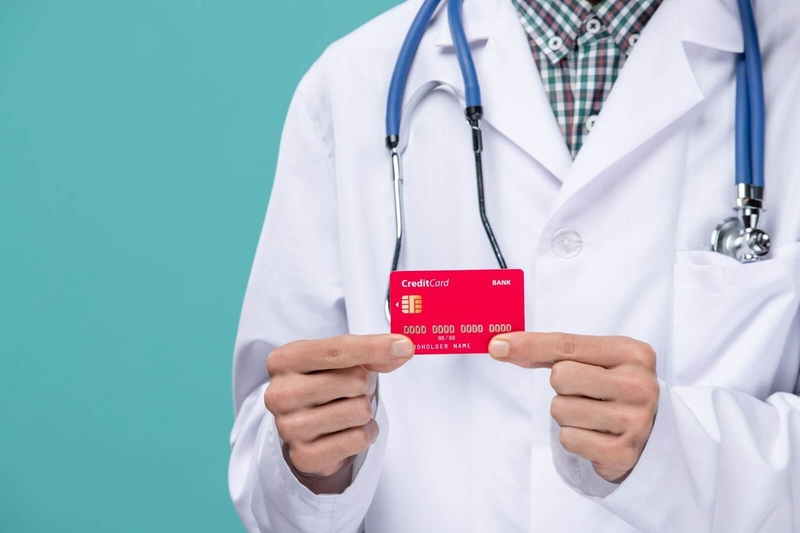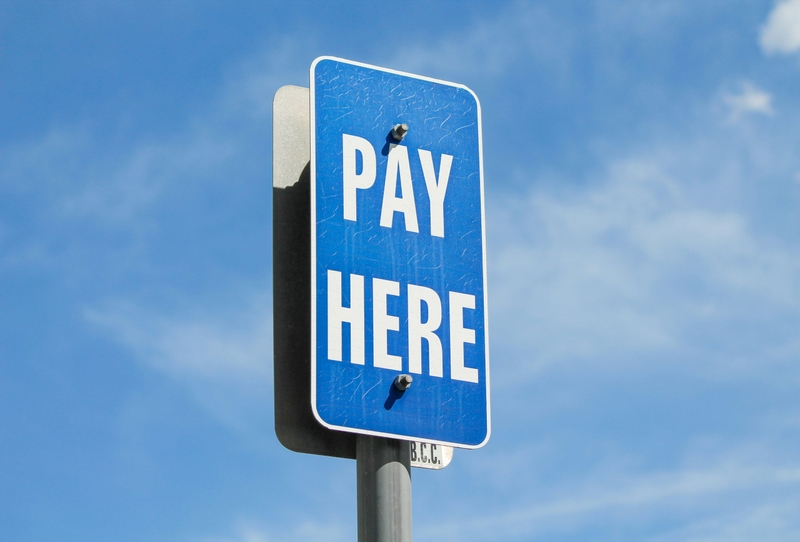

What is 3D Secure?
3D Secure adds an extra layer of protection to online payments by verifying transactions with temporary PINs or biometrics. Developed by Visa and adopted by Mastercard and others, it works behind the scenes with your bank and the retailer to confirm your identity. When you see the Verified by Visa or Mastercard SecureCode logo, you know your payment is safer. Plus, newer versions make the process smoother with biometric authentication for added security and convenience.
VELLIS NEWS
1 Apr 2025
By Vellis Team
Vellis Team
Automate your expense tracking with our advanced tools. Categorize your expenditures
Related Articles

Vellis News
19 August 2025
What Is a Medical Credit Card?
A medical credit card is a special kind of credit card made just for health‑care bills. You use it when insurance doesn’t cover the full amount for instance, for a dental crown, eye surgery, or a pricey test your plan skips, and then pay the balance off over time.

Vellis News
20 August 2025
What is a Payment Hub?
Managing payments across multiple banks, systems, and formats can quickly become overwhelming for businesses, especially as they grow or expand internationally. Each payment method might follow a different process, require its own format, and create challenges for tracking and reconciliation.

Vellis News
21 August 2025
How Much Does It Cost to Start an Aesthetics Business?
Starting an aesthetics business is an exciting step for beauty professionals and medical practitioners who want to blend art and science while building a profitable venture.
How Does 3D Secure Work?
The authentication process for 3D Secure transactions involves a series of steps to verify the user’s identity. For instance, during a transaction, the system might ask for something only the user knows or has, like a password or a biometric feature such as face recognition.
The 3D Secure authentication process includes:
- The customer selects items and proceeds to checkout.
- They enter card details in the payment gateway.
- The gateway contacts the issuer’s 3D Secure server to assess the transaction’s risk.
- If authentication is needed, the customer is redirected to their bank’s verification page.
- They confirm their identity via OTP, biometrics, or another method.
- Once verified, the issuer approves the transaction, and the sale is completed.
Understanding what is an automated clearing house and complying with Strong Customer Authentication (SCA) regulations lets 3D Secure minimize friction even in low-risk transactions.
Versions of 3D Secure
The evolution of 3D Secure technology marks significant strides in online payment security. From its initial version that used static passwords to the introduction of 3D Secure 2.0 with biometric and one-time password options, this transition has played a crucial role in making transactions smoother and more secure for users around the globe.
3D Secure 1.0
Launched in 2001 by Visa, the original version used static passwords for authentication, which led to user frustration and transaction failures. Merchants bore the risk of fraud-related chargebacks, making adoption inconsistent.
3D Secure 2.0
The updated version introduced OTPs and biometric authentication, significantly reducing friction at checkout. Visa reports that 3D Secure 2.0 decreases cart abandonment rates by 70% and speeds up checkout by 85%. It also aligns with PSD2 requirements, ensuring higher security for mobile transactions.
Benefits of 3D Secure for Consumers and Merchants
3D Secure stands as a vital tool in enhancing security for online transactions, shielding both consumers and merchants from the risks of unauthorized use and financial fraud.
Fraud Prevention
With e-commerce fraud rising, 3D Secure authentication ensures that only the cardholder can approve online transactions. Even if card details are stolen, unauthorized purchases become difficult.
Chargeback Protection
Merchants save money by reducing fraudulent chargebacks. For instance, ChowNow implemented 3D Secure and reduced chargebacks by 99%, saving over $1 million. With 3D Secure Mastercard and Visa, liability for fraud shifts to the issuing bank, protecting businesses.
Better User Experience
Unlike older security methods, 3D Secure 2.0 eliminates the need for passwords, replacing them with OTPs or biometric authentication. This speeds up transactions while maintaining security.
Regulatory Compliance
Businesses adopting 3D Secure Visa or Mastercard comply with PSD2 regulations in Europe, which require stronger authentication for online payments. This helps avoid penalties while building customer trust.
How to Activate 3D Secure on Your Card
To activate 3D Secure on your card, follow these steps:
- Check with your issuing bank – Activation methods vary, so confirm with your bank.
- Register online or via the banking app – Some banks enable it automatically, while others require manual setup.
- Verify your account details – Ensure your contact information is up to date.
- Set authentication preferences – Choose between OTPs or biometrics for added security.
If you’re using Visa or Mastercard, you may also search for guides on how to activate a 3D Secure Visa or how to activate a 3D Secure Mastercard on your bank’s website.
3D Secure vs. Other Payment Security Methods
3D Secure stands out by directly involving banks in the authentication of online transactions, adding an extra layer of security compared to methods like tokenization, CVV verification, and two-factor authentication.
Tokenization
Tokenization replaces your actual card number with a digital token, making it useless to hackers. This method, often used alongside 3D Secure payments, enhances security.
CVV Verification
CVV codes add security by requiring the three-digit code on the back of your card, but they don’t offer protection against stolen card details used online.
Two-Factor Authentication (2FA)
Like 3D Secure authentication, 2FA requires two verification steps, such as a password and an OTP. This strengthens security but can slow down the process.
Common Issues and Troubleshooting 3D Secure
Users might face issues like authentication failure or delayed OTP delivery with 3D Secure. Checking bank restrictions and ensuring accurate account details could solve some of these problems.
3D Secure Authentication Failure
If 3D Secure authentication failed, check for incorrect details or expired OTPs. Ensure your bank has your correct phone number for OTP delivery.
Delayed OTP Delivery
Network issues can delay OTPs. Ensure you have a strong signal, and update your phone number with your bank if needed.
Bank-specific Restrictions Preventing 3D Secure Activation
Some banks have strict policies affecting how to activate 3D Secure Visa or how to activate 3D Secure Mastercard. Contact customer service for activation help if you’re having trouble.
Here are some quick fixes to tackle common problems:
- Double-check all entered details.
- Ensure your phone has network coverage.
- Contact your bank if problems persist.
These steps will assist users in managing their 3D Secure settings effectively and ensuring smoother transactions with enhanced security measures like those provided by 3D Secure Visa and Mastercard options.
Future of 3D Secure
The future of 3D Secure looks promising, with advancements in AI-driven fraud detection and the integration of biometric authentication shaping its development. These technologies will likely expand payment processing services to include new platforms like cryptocurrency transactions.
AI-driven Fraud Detection.
AI continuously analyzes transactions, identifying suspicious activity before fraud occurs. This makes 3D Secure credit card transactions even safer.
Integration with Biometric Authentication
Future 3D Secure authentication will rely more on facial recognition and fingerprints, eliminating the need for OTPs.
Adoption of 3D Secure
3D Secure is expanding to cover crypto payments, providing an extra security layer for digital currencies.
With online fraud on the rise, 3D Secure payments offer an essential safeguard for both businesses and consumers. Whether you’re using 3D Secure Mastercard, 3D Secure Visa, or any other provider, activating this feature ensures safer transactions.
Contact your bank today to learn how to activate 3D Secure authentication and protect your online purchases!
FAQs About 3D Secure
What is 3D Secure authentication?
3D Secure adds an extra layer of security to online transactions by requiring additional verification, like a one-time password (OTP) or biometric authentication.
How do I know if my card supports 3D Secure?
Most major card providers, including Visa, Mastercard, and American Express, support 3D Secure—check with your bank to confirm.
What should I do if my 3D Secure authentication fails?
Ensure you have a stable internet connection, double-check your OTP, and contact your bank if the issue persists.
Is 3D Secure mandatory for online payments?
In some regions, 3D Secure is required for compliance with security regulations, while in others, it remains optional.
Can I disable 3D Secure on my credit card?
Some banks allow customers to opt out, but disabling it increases the risk of fraud and is generally not recommended.
References
N26. (n.d.). What is 3D Secure? Retrieved from: n26.com/en-eu/3d-secure
EBANX. (n.d.). Payments explained: 3D Secure. Retrieved from: insights.ebanx.com/en/resources/payments-explained/3d-secure/
NMI. (n.d.). What is 3D Secure? Retrieved from: support.nmi.com/hc/en-gb/articles/18865203729297-What-is-3D-SecureU.S. Federal Trade

Ready to transform your financial management?
Sign up with Vellis today and unlock the full potential of your finances.
Related Articles

Vellis News
26 September 2025
Can You Legally Pass on Credit Card Fees to Customers?
To start with, credit card fees are the charges merchants pay on each card transaction, covering interchange, assessments, and processor markups. As these costs continue to rise, both small and large businesses are exploring whether to pass them on to customers through surcharges or convenience fees. For small businesses, even modest fees can significantly reduce already slim profit margins, while larger companies feel the impact across high transaction volumes.

Vellis News
19 August 2025
Cash Discount Vs. Surcharge: Which Program Is Better?
When it comes to cutting down on credit card processing fees, many merchants are torn between two common pricing strategies: cash discounting and surcharging. But what exactly is the difference?

Vellis News
23 September 2025
Invisible Payments: The Future of Frictionless Transactions
Imagine walking into a store, picking up what you need, and simply walking out without ever pulling out your wallet or phone. The transaction happens in the background — no swiping, no tapping, no scanning.
We use cookies to improve your experience and ensure our website functions properly. You can manage your preferences below. For more information, please refer to our Privacy Policy.
© 2025 Vellis Inc.Vellis Inc. is authorized as a Money Services Business by FINTRAC (Financial Transactions and Reports Analysis Centre of Canada) number M24204235. Vellis Inc. is a company registered in Canada, number 1000610768, headquartered at 30 Eglinton Avenue West, Mississauga, Ontario L5R3E7, Canada.

